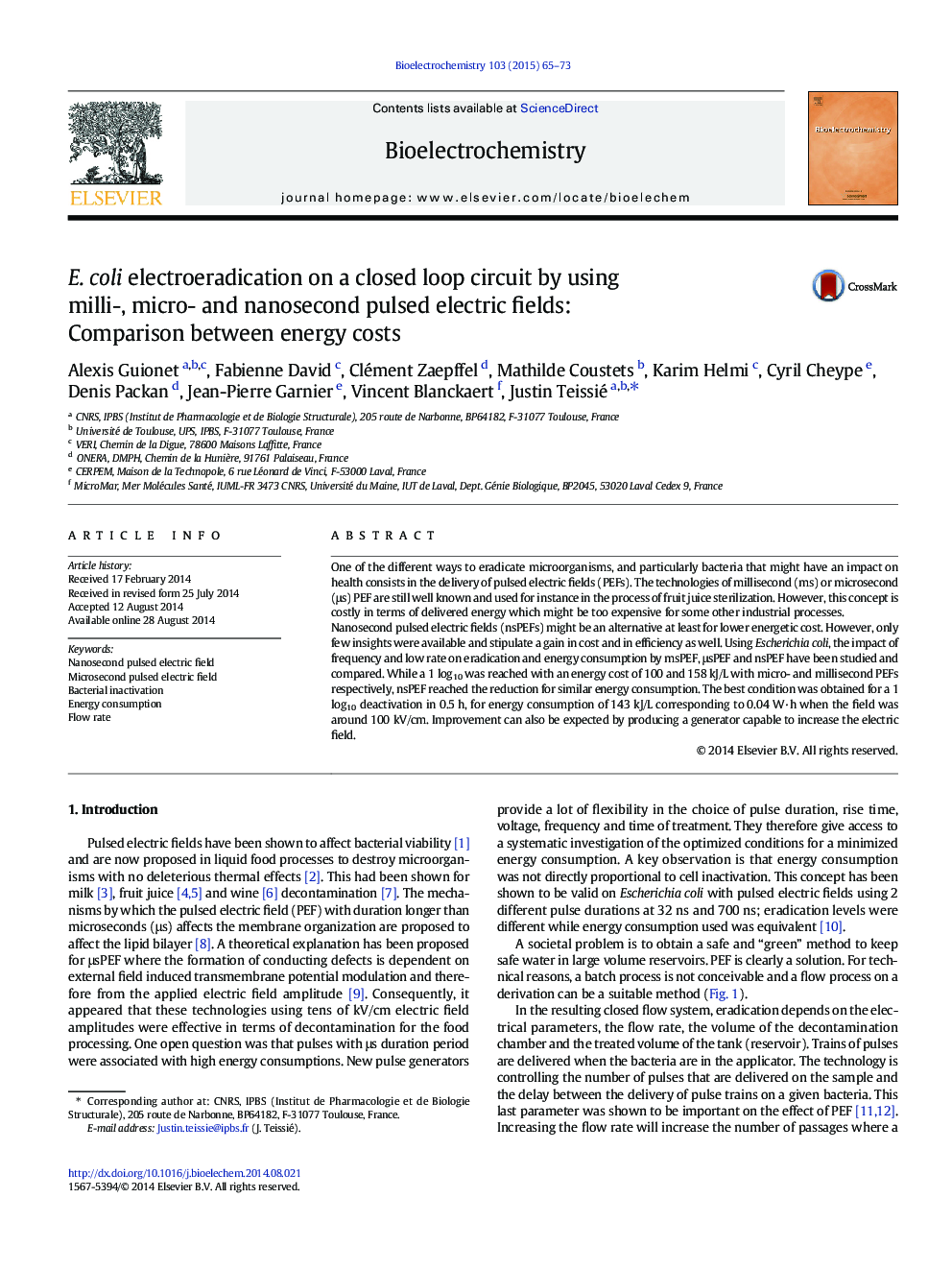| Article ID | Journal | Published Year | Pages | File Type |
|---|---|---|---|---|
| 1267903 | Bioelectrochemistry | 2015 | 9 Pages |
•Trains of nanosecond pulsed electric field (nsPEF) impact bacteria survival.•Flow rate and frequency in the applicator are key variables to injure bacteria.•No important differences are seen among nano-, micro- and millisecond PEFs.•Increasing electric field and frequency might improve the nanosecond process.•A new generation of generators is needed.
One of the different ways to eradicate microorganisms, and particularly bacteria that might have an impact on health consists in the delivery of pulsed electric fields (PEFs). The technologies of millisecond (ms) or microsecond (μs) PEF are still well known and used for instance in the process of fruit juice sterilization. However, this concept is costly in terms of delivered energy which might be too expensive for some other industrial processes.Nanosecond pulsed electric fields (nsPEFs) might be an alternative at least for lower energetic cost. However, only few insights were available and stipulate a gain in cost and in efficiency as well. Using Escherichia coli, the impact of frequency and low rate on eradication and energy consumption by msPEF, μsPEF and nsPEF have been studied and compared. While a 1 log10 was reached with an energy cost of 100 and 158 kJ/L with micro- and millisecond PEFs respectively, nsPEF reached the reduction for similar energy consumption. The best condition was obtained for a 1 log10 deactivation in 0.5 h, for energy consumption of 143 kJ/L corresponding to 0.04 W·h when the field was around 100 kV/cm. Improvement can also be expected by producing a generator capable to increase the electric field.
Graphical abstractFigure optionsDownload full-size imageDownload as PowerPoint slide
